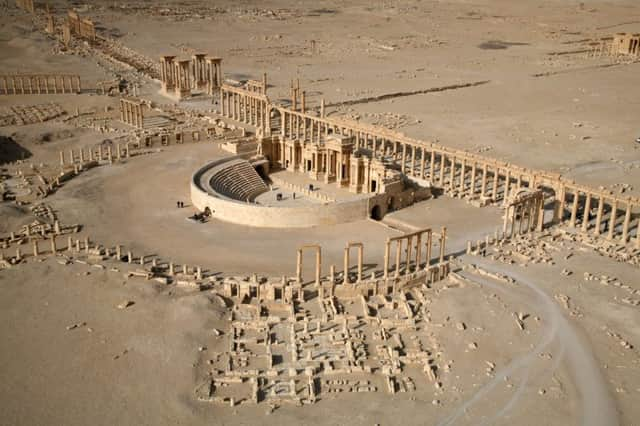Temple at Palmyra ‘blown up by Islamic State’


Palmyra, one of the Middle East’s most spectacular archaeological sites and a Unesco World Heritage site, sits near the modern Syrian city of the same name.
Activists said the militants used explosives to blow up the Baalshamin Temple, the blast being so powerful that it also damaged some of the Roman columns around it.
Advertisement
Hide AdAdvertisement
Hide AdThe Britain-based Syrian Observatory for Human Rights said that the temple was blown up a month ago. However, Turkey-based activist Osama al-Khatib, who is originally from Palmyra, said the temple was blown up on Sunday. Both said the extremists used a large amount of explosives to destroy the site.
The activists relied on information from those still in Palmyra but such contradictory accounts are common in Syria’s long civil war.
The fate of the nearby Temple of Bel, dedicated to the Semitic god Bel, was not known yesterday. Islamic State group supporters on social media did not immediately mention the temple’s destruction.
The Islamic State Sunni extremists, who have imposed a violent interpretation of Islamic law across their self-declared “caliphate” in territory they control in Syria and Iraq, claim ancient relics promote idolatry and say they are destroying them as part of their purge of paganism. However, they are also believed to sell off looted antiquities, bringing in significant sums of cash.
The Baalshamin Temple site is about 500m from Palmyra’s famous amphitheatre, where Islamic State killed more than 20 Syrian soldiers after the historic town was captured in May.
The temple dates to the first century and is dedicated to the Phoenician god of storms and fertilising rains.
The head of Unesco, Irina Bokova, said that Islamic State extremists in Syria and Iraq are engaged in the “most brutal, systematic” destruction of ancient sites since the Second World War. The stark assessment came hours after militants demolished the St Elian Monastery, which housed a fifth-century tomb and served as a major pilgrimage site. The monastery was in the town of Qaryatain in central Syria.
News of the temple’s destruction comes after relatives and witnesses said last Wednesday that Khaled al-Asaad, an 81-year-old antiquities scholar who devoted his life to understanding Palmyra, was beheaded by Islamic State militants, his bloodied body hung on a pole. He even had named his daughter after Zenobia, the queen that ruled from the city 1,700 years ago.
Meanwhile in Iraq, at least 23 soldiers and government-allied militiamen were killed on Sunday in an attack by Islamic State militants in the turbulent Anbar province west of Baghdad.